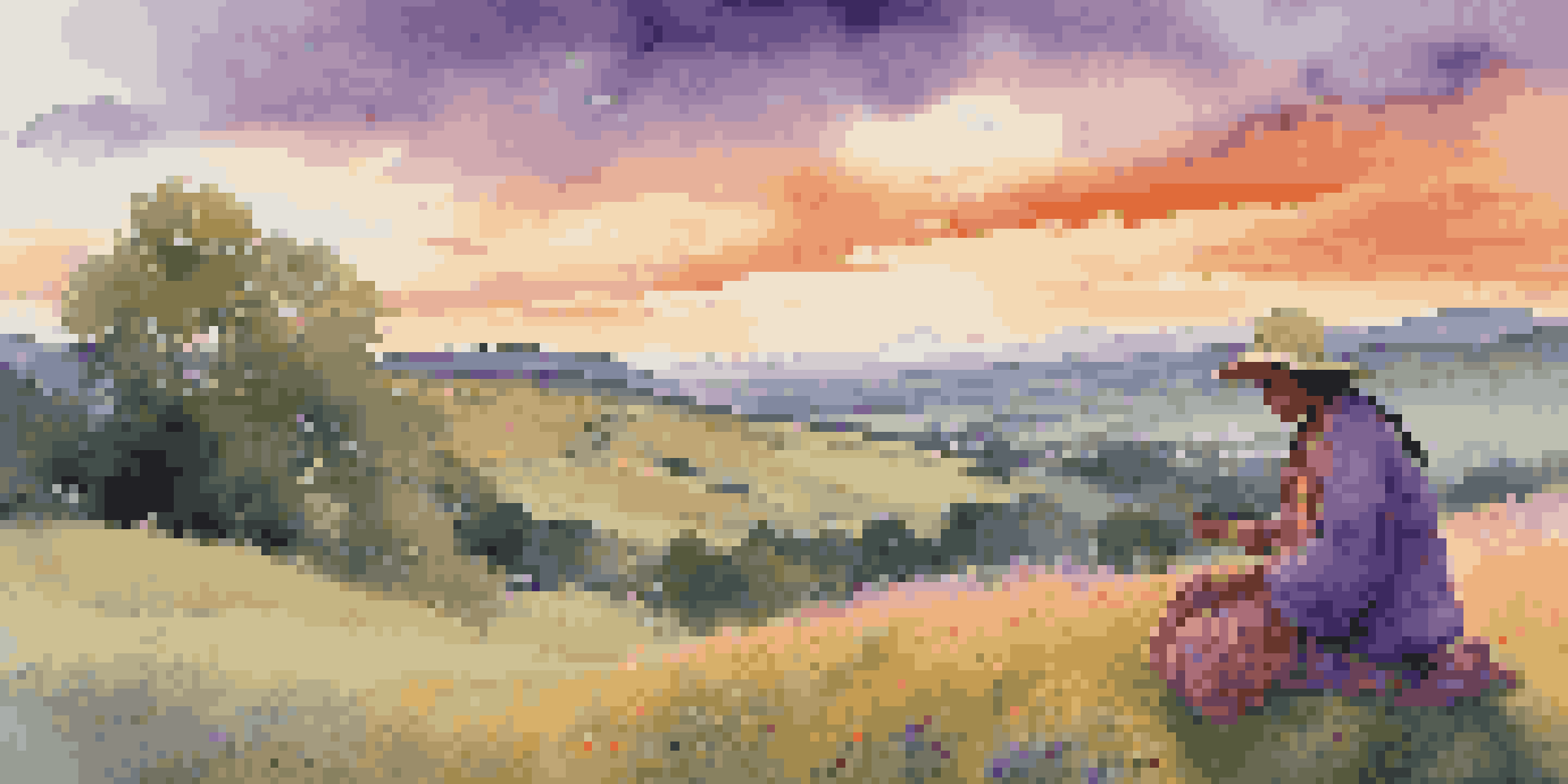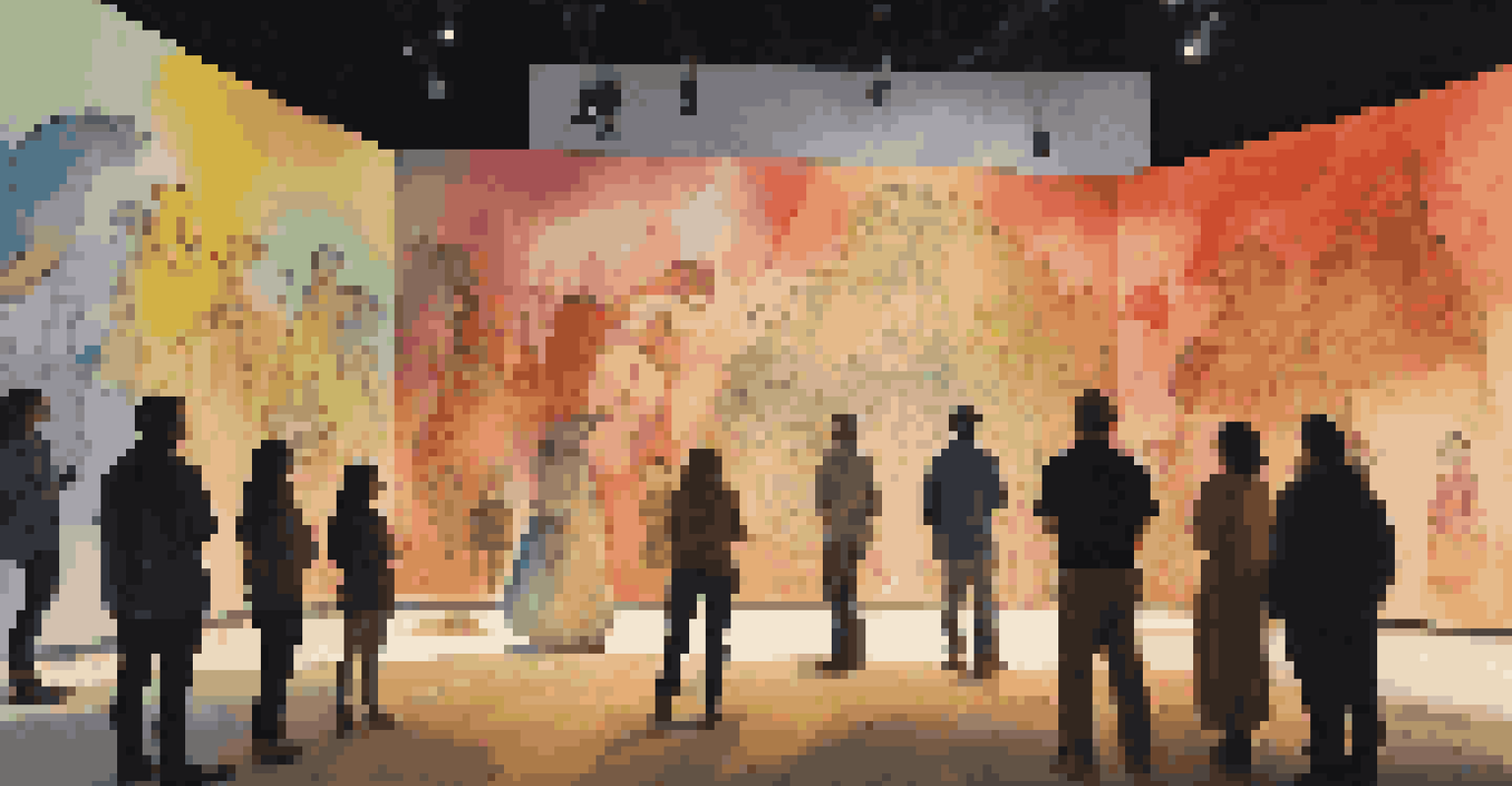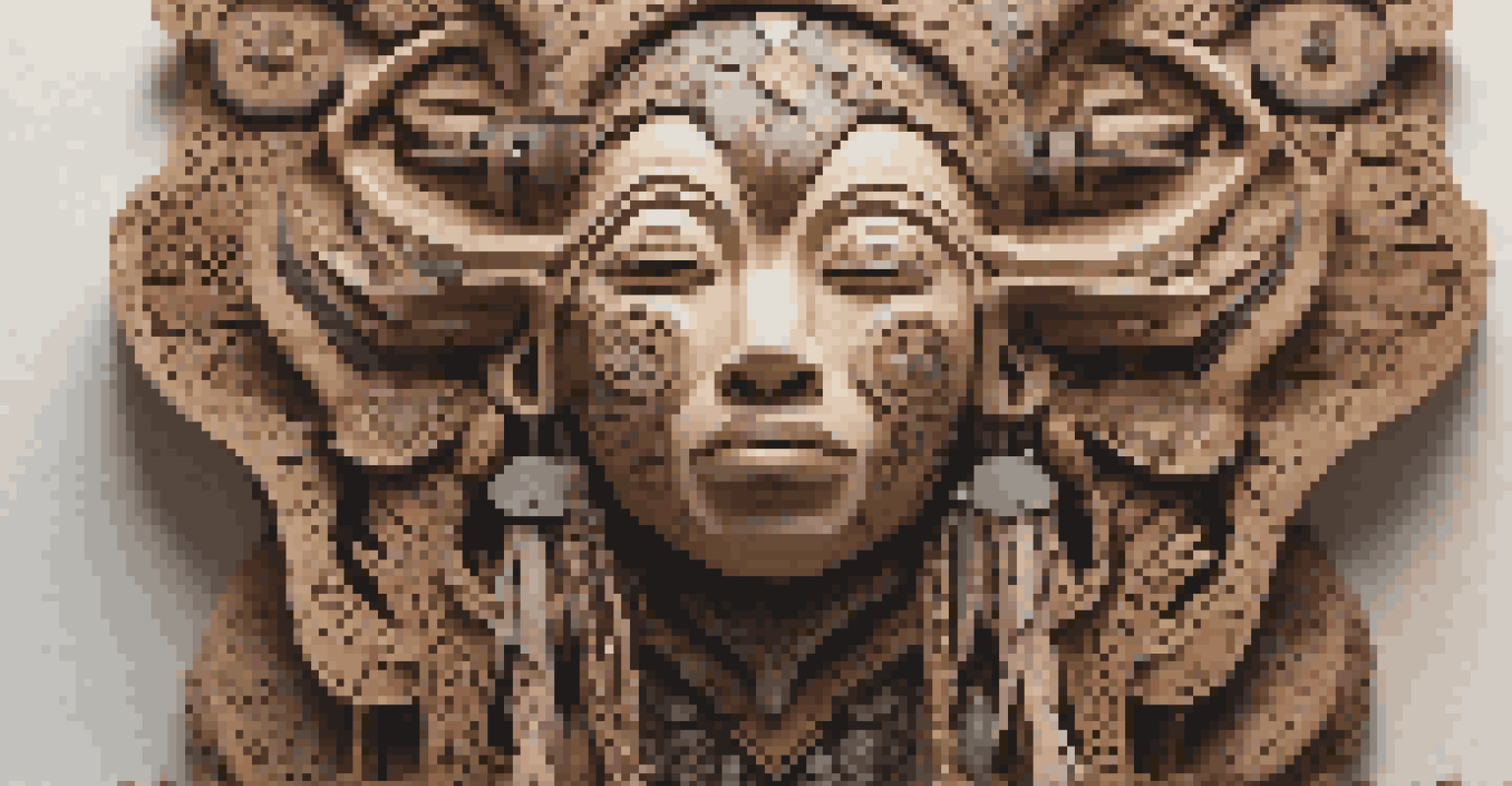Folklore and Art Criticism: Analyzing Cultural Narratives

Understanding Folklore: Roots and Definitions
Folklore is the collection of traditional beliefs, customs, and stories that shape a culture's identity. It encompasses everything from myths and legends to fairy tales and proverbs, acting as a lens through which we can understand the values and norms of a community. By exploring these narratives, we can uncover the layers of meaning that inform artistic expression.
Folklore is the heart of a culture, a collection of stories that shape our identities and connect us to our past.
At its core, folklore provides a rich tapestry of cultural narratives that artists draw upon for inspiration. For instance, an artist may use a local legend as a backdrop for their work, infusing it with the moral lessons or historical significance embedded in the story. This interplay between folklore and art allows for a deeper engagement with both cultural heritage and contemporary issues.
Through this lens, we see how folklore is not static; it evolves as it is retold and reinterpreted in different contexts. This dynamic nature ensures that folklore remains relevant, resonating with both the past and present. As such, folklore serves as a vital resource for artists and critics alike, inviting ongoing exploration and discussion.
Art Criticism: An Overview of Its Purpose
Art criticism involves the evaluation and interpretation of visual arts, providing insights into the work's meaning, context, and significance. Critics serve as guides, helping audiences navigate the often complex layers of artistic expression. Their analyses can illuminate the relationship between a piece of art and broader cultural narratives, including those found in folklore.

A well-rounded critique not only assesses the aesthetic qualities of an artwork but also considers the cultural and historical backdrop from which it emerges. For example, examining an artwork through the lens of folklore can reveal underlying themes related to identity, tradition, and societal values. This approach encourages viewers to engage with the art on a deeper level, fostering a richer understanding.
Folklore Shapes Cultural Identity
Folklore encompasses traditional beliefs and stories that define a culture's identity, offering insights into its values and norms.
Moreover, art criticism plays a crucial role in shaping public perception and appreciation of art. By highlighting connections to folklore, critics can advocate for the importance of cultural narratives in contemporary art, encouraging a dialogue that spans generations. This dialogue enriches the art world, making it more inclusive and reflective of diverse experiences.
The Intersection of Folklore and Art Criticism
At the crossroads of folklore and art criticism lies a unique opportunity to explore how cultural narratives inform artistic practices. This intersection allows critics to analyze how artists reinterpret traditional stories, creating new meaning while preserving cultural heritage. By examining this relationship, we can appreciate the continuity and transformation of cultural expressions over time.
Art is the most beautiful of all lies; it reveals the truth of our cultural narratives, giving voice to the stories that define us.
For instance, an artist who incorporates elements of their cultural folklore into their work can evoke a sense of nostalgia and belonging. Critics can then explore how these elements resonate with audiences, bridging the gap between past and present. This connection not only enriches the viewer's experience but also emphasizes the ongoing relevance of folklore in contemporary society.
Furthermore, this intersection challenges us to reconsider established art movements and their ties to folklore. By understanding how artists draw from their cultural narratives, we can gain a more nuanced view of their work and the larger art landscape. This holistic approach fosters a deeper appreciation for both art and the rich tapestry of stories that inform it.
Cultural Narratives as a Source of Inspiration
Cultural narratives serve as a wellspring of inspiration for artists, providing a reservoir of stories, symbols, and motifs to explore. These narratives can be deeply personal or widely shared, allowing artists to connect with their audience on various levels. By tapping into folklore, artists can express complex emotions and ideas that resonate across cultural boundaries.
For example, an artist might depict a well-known folktale in a modern context, reimagining its characters and themes to reflect contemporary issues. This approach not only honors the original story but also invites new interpretations and discussions. Critics can highlight these innovative adaptations, showcasing how folklore continues to evolve and inspire.
Art Criticism Illuminates Narratives
Art criticism evaluates artworks within their cultural contexts, revealing connections to folklore and enhancing audience understanding.
Additionally, the act of creating art influenced by folklore fosters a dialogue between the past and present. As artists reinterpret traditional narratives, they contribute to the ongoing conversation about cultural identity and representation. This dynamic engagement encourages audiences to reflect on their own experiences and the stories that shape their lives.
Challenges in Analyzing Folklore and Art
Despite the rich connections between folklore and art, analyzing these relationships can pose challenges. One major obstacle is the potential for misinterpretation, as critics may overlook the cultural context in which a work was created. This can lead to a superficial understanding of the artwork, ultimately diminishing its significance and impact.
Moreover, the diversity within folklore itself complicates the analysis. Different regions, communities, and even individual artists may have distinct interpretations of the same tale. Critics must navigate this complexity, recognizing that a single narrative can yield multiple meanings based on cultural perspectives and personal experiences.
Additionally, the commercialization of art can dilute the authenticity of folklore-inspired works. When artists adapt traditional stories for mass consumption, there's a risk of losing the original intent and depth of those narratives. Critics play a crucial role in addressing these challenges, advocating for a more thoughtful and context-aware approach to both art and folklore.
Case Studies: Folklore in Contemporary Art
Examining specific case studies can illuminate the intersection of folklore and art criticism in action. For instance, an artist who draws from indigenous folklore may create a piece that critiques modern societal issues while honoring their heritage. Such works challenge viewers to reflect on the implications of these narratives and their relevance today.
One notable example is the use of traditional storytelling techniques in modern installations. Artists may incorporate multimedia elements to bring folklore to life, inviting audiences to experience these narratives in new and engaging ways. Critics can analyze how these innovative approaches enhance our understanding of both the stories and the artistic practices involved.
Evolving Relationship of Art and Folklore
The intersection of folklore and contemporary art challenges artists and critics to reinterpret traditional narratives, fostering ongoing dialogue.
Additionally, exploring the reactions of different communities to these artworks can provide valuable insights. Audience responses can reveal the ways in which folklore resonates across cultures, fostering a sense of connection and shared experience. Through these case studies, we see how folklore continues to be a vibrant source of inspiration and dialogue in contemporary art.
Concluding Thoughts: The Future of Folklore and Art Criticism
As we look to the future, the relationship between folklore and art criticism is poised to evolve even further. The increasing globalization of culture means that artists are more likely to draw from a diverse array of folk traditions, creating a rich tapestry of narratives that cross borders. Critics will need to adapt their analyses to reflect this growing complexity and interconnectedness.
Moreover, the rise of digital media offers exciting new avenues for exploring folklore in art. Social media platforms allow for the rapid sharing of cultural narratives, enabling artists to reach wider audiences and engage in real-time discussions. Critics can leverage these platforms to highlight emerging trends and foster a more inclusive dialogue about cultural narratives.

Ultimately, the interplay between folklore and art criticism will continue to challenge and inspire both artists and audiences. By embracing this dynamic relationship, we can deepen our understanding of cultural narratives and their significance in shaping artistic expression. As we move forward, let us celebrate the stories that connect us and the art that brings them to life.